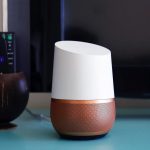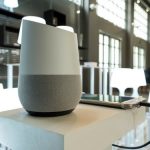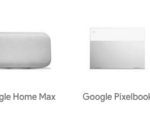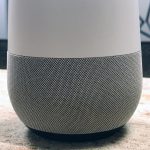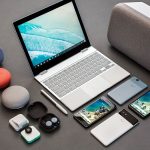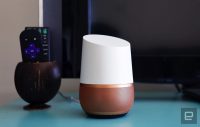All the devices Google announced Oct. 4 at its ‘made by Google’ hardware event
‘Hardware, software and AI’ is Google’s competitive recipe for this new ecosystem.
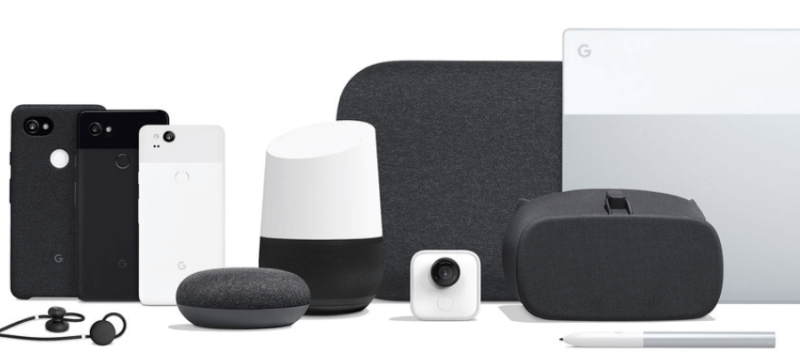
In San Francisco on October 4, Google held its “Made by Google” hardware event. This comes in the wake of Apple’s recent iPhone X launch and Amazon’s more recent, surprise Echo event.
There is now a growing family of Google devices that are intended to work together and that share common features and capabilities. Some of the devices announced today were previously leaked or anticipated (e.g., Google Home Mini). Still, there were a few surprises, such as the new Clips camera and a new Pixelbook laptop with a stylus.
But what’s arguably more interesting than any of the individual devices is what they collectively reveal about Google’s strategy, competitive messaging and the future of search, which I’ll write about separately. Below are all the hardware announcements from today:
The Pixel 2 and Pixel 2 XL smartphones: These phones retail for $649 and $849 respectively. Google argues they carry the best camera available on any smartphone today. They also come with free, unlimited video and image storage. They will also feature Google Lens visual search and a range of other features.
Google Home Mini and Max speakers: The Mini is $49 and answers Amazon’s Echo Dot price point. Google says the Mini has terrific sound, though to my ear it’s not significantly better than than the Dot’s. At the other end, the Google Home Max is the company’s answer to Apple’s high-fidelity HomePod. At $399, it’s also $50 more expensive than the Apple speaker. Like the Mini, it carries the Google Assistant.
The company also says the Max is “20x more powerful than Google Home.” It has “smart sound,” powered by Google machine learning, that allows the device to adapt to where it’s placed in the room, compensating for acoustical imperfections. Google’s personalized “Voice Match” allows multiple users to access individual playlists through the same device.

Pixelbook: The new touchscreen laptop-tablet hybrid is a successor to the Chrome Pixel. It comes in three memory configurations and starts at $999. It has internal storage so it can access files offline, though it’s still intended to be used primarily with a connection. If there’s no WiFi or the signal is lost, it will connect automatically with the Pixel’s smartphone signal. Google says this “instant tethering” is simpler and faster than a manual hotspot.
Google argues the Pixelbook is the first convertible laptop that also actually feels natural as a tablet. There’s also an optional $99 stylus (“Pixelbook Pen“) that enables users to write and draw on the screen. Another interesting trick is the ability to circle an image on the Pixelbook screen with the Pen and automatically initiate a search.
The Pixelbook can also run all Google Play/Android apps — some of which are specifically optimized for the larger screen.
Pixel Buds: These wireless ear buds compete with Apple’s Airpods and, like the Apple product, cost $159. Google showed off simultaneous, real-time language translation using the Pixel Buds, which was very impressive (if it was actually a live demo). Using the Pixel Buds or another device that could access Translate, two people of different languages could carry on an intelligible conversation in real time.
Google also introduced an update to Daydream View, which it called “the best virtual reality headset on the market.” The company said there would be a range of exclusive content available with the device from IMAX and major studios (e.g., Disney). The headset will cost $99, which is significantly cheaper than Facebook’s Oculus headset ($499) and even the lower-end Gear VR rig from Samsung ($129). Google is thus now positioned to be the provider of mainstream VR experiences to the market — cheaper than Oculus, better than Gear VR.
Google Clips was one of the surprises today. It’s a small camera with machine learning built in. You basically place it in a room or clip it on an object and it starts to take pictures, reportedly learning over time how to take better pictures to capture candid moments. You can also control it remotely with your phone. It will sell for $129.
Many of these devices have the Google Assistant built in and are designed to work together and with third-party smart home accessories and appliances. Indeed, Google is building a device and smart-home ecosystem intended to match or exceed rivals in key features and differentiate with core Google assets, such as search, speech and AI.
Marketing Land – Internet Marketing News, Strategies & Tips
(25)



